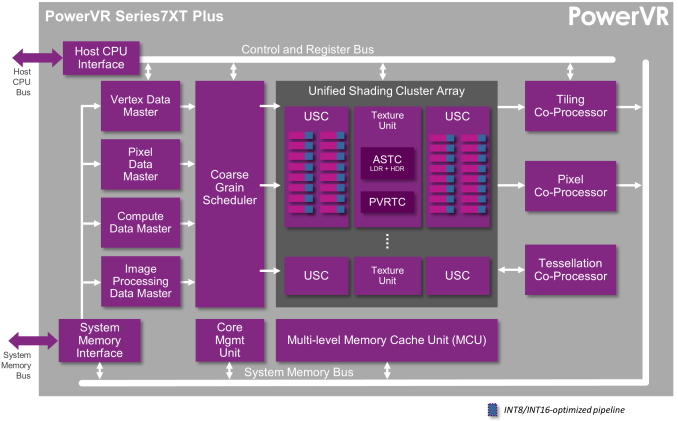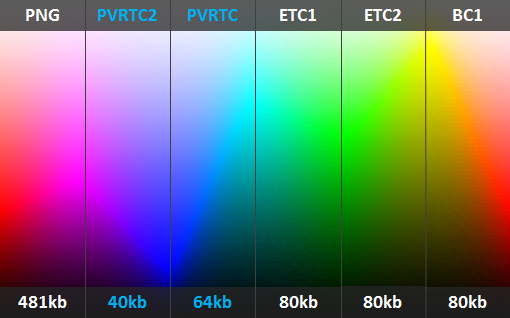Apple To Develop Own GPU, Drop Imagination's GPUs From SoCs
by Ryan Smith on April 3, 2017 6:30 AM ESTImagination: Patents & Losing an Essential Contract
As for Imagination, the news is undoubtedly grim, but not necessarily fatal. Imagination has never hidden the fact that Apple is their most important customer – even labeling them as an “Essential Contract” in their annual report – so it’s no secret that if Apple were to leave Imagination, it would be painful.
By the numbers, Apple’s GPU licensing and royalties accounted for £60.7M in revenue for Imagination’s most recent reporting year, which ran May 1st, 2015 to April 30th, 2016. The problem for Imagination is that this was fully half of their revenue for that reporting year; the company only booked £120M to begin with. And if you dive into the numbers, Apple is 69% of Imagination’s GPU revenue. Consequently, by being dropped by Apple, Imagination has lost the bulk of their GPU revenue starting two years down the line.
| Imagination Financials: May 1st, 2015 to April 30, 2016 | |||
| Company Total | GPUs Total | Apple | |
| Revenue (Continuing) | £120M | £87.9M | £60.7M |
| Operating Income | -£61.5M | £54.7M | |
The double-whammy for Imagination is that as an IP licensor, the costs to the company of a single customer is virtually nil. Imagination still has to engage in R&D and develop their GPU architecture and designs regardless. Any additional customer is pure profit. But at the same time, losing a customer means that those losses directly hit those same profits. For the 2015/2016 reporting year, Apple’s royalty & licensing payments to Imagination were greater than the profits their PowerVR GPU division generated for the year. Apple is just that large of a customer.
As a result, Imagination is being placed in a perilous position by losing such a large source of revenue. The good news for the company is that their stakes appear to be improving – if slowly – and that they have been picking up more business from other SoC vendors. The problem for Imagination is that they’ll need a drastic uptick in customers by the time Apple’s payments end in order to pay the bills, never mind turning a profit. Growing their business alone may not be enough.
Which is why Imagination’s press release and the strategy it’s outlining is so important. The purpose of Imagination’s release isn’t to tell the world that Apple is developing a new GPU, but to outline to investors and others how the company intends to proceed. And that path is on continued negotiations with Apple to secure a lesser revenue stream.
The crux of Imagination’s argument is that it’s impractical for Apple to develop a completely clean GPU devoid of any of Imagination’s IP, and this is for a few reasons. The most obvious reason is that Apple already knows how Imagination’s GPUs work, and even though Apple wouldn’t be developing a bit-for-bit compatible GPU – thankfully for Apple, the code app developers write for GPUs operates at a higher level and generally isn’t tied to Imagination’s architecture – those engineers have confidential information about those GPUs that they may carry forward. Meanwhile on the more practical side of matters, Imagination has a significant number of GPU patents (they’ve been at this for over 20 years), so developing a GPU that doesn’t infringe on those patents would be difficult to do, especially in the mobile space. Apple couldn’t implement Imagination’s Tile Based Deferred Rendering technique, for example, which has been the heart and soul of their GPU designs.
However regardless of the architecture used and how it’s designed, the more immediate problem for Apple – and the reason that Imagination is likely right, to an extent – is replicating all of the features available in Imagination’s GPUs. Because Apple’s SoCs have always used GPUs from the same vendor, certain vendor-specific features like PowerVR Texture Compression (PVRTC) are widely used in iOS app development, and Apple has long recommended that developers use that format. For their part, Apple is already in the process of digging themselves out of that hole by adding support for the open ASTC format to their texture compression tools, but the problem remains of what to do with existing apps and games. If Apple wants to ensure backwards compatibility, then they need to support PVRTC in some fashion (even if it’s just converting the textures ahead of time). And this still doesn’t account for any other Imagination-patented features that have become canonized into iOS over time.
Consequently, for Imagination their best move is to get Apple to agree to patent indemnification or some other form of licensing with their new GPU. For Apple it would ensure that nothing they do violates an Imagination patent, and for Imagination it would secure them at least a limited revenue stream from Apple. Otherwise Imagination would be in a very tight spot, and Apple would face the risk of patent lawsuits (though Imagination isn’t making transparent threats, at least not yet).












144 Comments
View All Comments
tipoo - Monday, April 3, 2017 - link
That would be cool, the VR focus. Hopefully increase screen resolutions at the same time, VR is atrocious on my 6S (half of 750p per eye up close is not pretty)BillBear - Tuesday, April 4, 2017 - link
There is some evidence that Apple has already switched over the compute core of their current GPU to their own design, as previously theorized by the same guy who figured out that NVIDIA had switched over to tile based rendering.http://www.realworldtech.com/apple-custom-gpu/
He goes into the difference between Imagination's compute engine, which can do 16 bit math by running it in 32 bits and then ignoring the other 16 bits you don't care about and Apple's compute engine which does handle 16 bit math.
Now what other heavy workload for mobile devices already uses the hell out of 16 bit math?
The sort of deep learning AI algorithms that Apple prefers to run locally on your mobile devices for privacy reasons.
Meteor2 - Wednesday, April 5, 2017 - link
Ooo, good spot!Glaurung - Monday, April 3, 2017 - link
So basically Apple has decided they can do phone/tablet GPUs better if they do them in house. And I wonder what this means for their continued reliance on Intel/Nvidia/AMD for mac GPUs?Are they going to make something that they can use in future Mac designs as well as in phones? Switching Mac CPUs to an Apple made design has a big problem because of all the Intel-only software out there, and all the Mac users depending on x86 compatibility for VMs or Bootcamp.
But there's not nearly the same degree of lockin for GPU architecture. If they come up with something better (ie, more power efficient and fast enough) than Intel's GPUs, or better (for pro apps, they don't give a damn about games) than AMD/Nvidia, then that would be an even more interesting shakeup.
Eyered - Monday, April 3, 2017 - link
Apple's new GPU would have to be top notch. AMD has Vega and Nvidia Volta coming soon. Both of which will be crazy powerful and efficient compared to what we have today. It would be a tough road to get to the point that they could complete. I'd be more than happy for the extra competition in the GPU market. Well, I'm guessing though it would be locked down to a MAC.As for the x86 stuff. It's here to stay I think. I wonder how much needing to have a CPU x86 holds us back.
epobirs - Monday, April 3, 2017 - link
Microsoft is adding x86 support to Windows 10 on ARM. Apple should be able to do the same with MacOS,loekf - Tuesday, April 4, 2017 - link
AFAIK, the Darwin kernel (or OSX itself) already support 64-bits ARM as an architecture. Guess it's just for Apple's internal usage.Still, I doubt if Apple would do another architecture change for OSX, after PPC to x86 a while ago.
name99 - Tuesday, April 4, 2017 - link
Jesus, the ignorance. What kernel do you think iOS uses?willis936 - Monday, April 3, 2017 - link
Hopefully Imagination's lawyers know their business. Apple engineers stare at a company's owned and selling IP, then says "hey we can do that without paying for the IP". Apple will need to be extremely careful with their design if they don't want to get sued to the moon.tipoo - Monday, April 3, 2017 - link
It would be a lot more interesting to me if they scaled this up to the Mac. Then there would be some new blood in the graphics arena, even if the third party was Apple and locked down to Apples hardware. But I wonder how much better they could do than Nvidia on efficiency, if any.